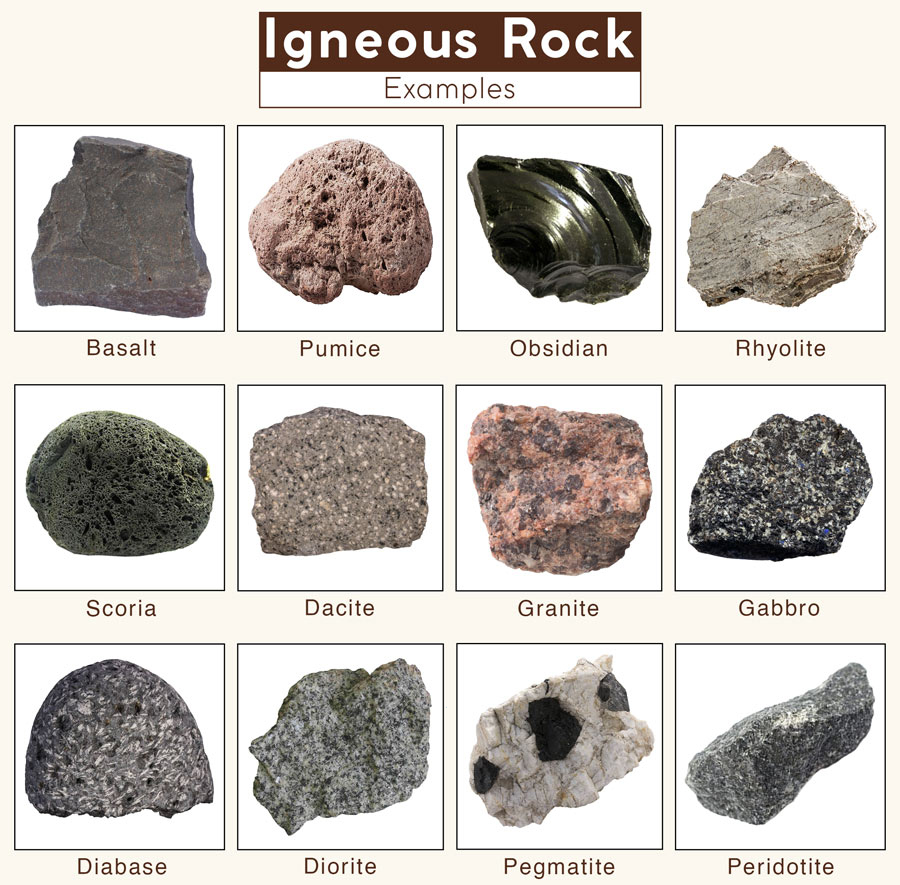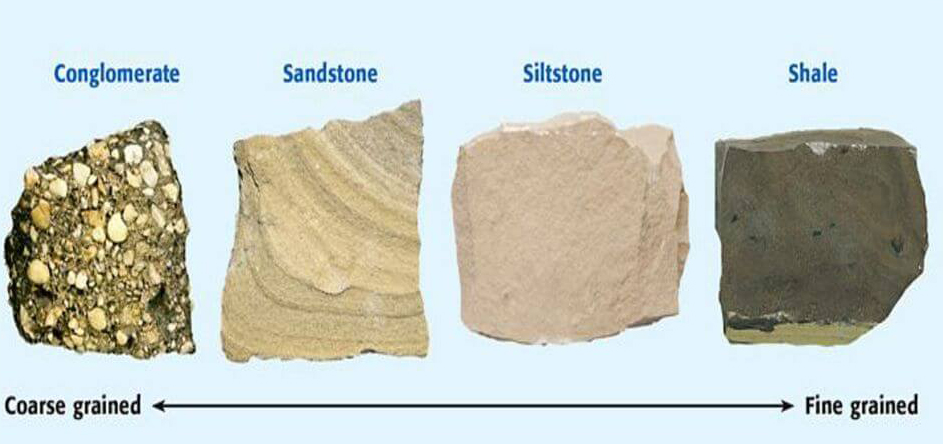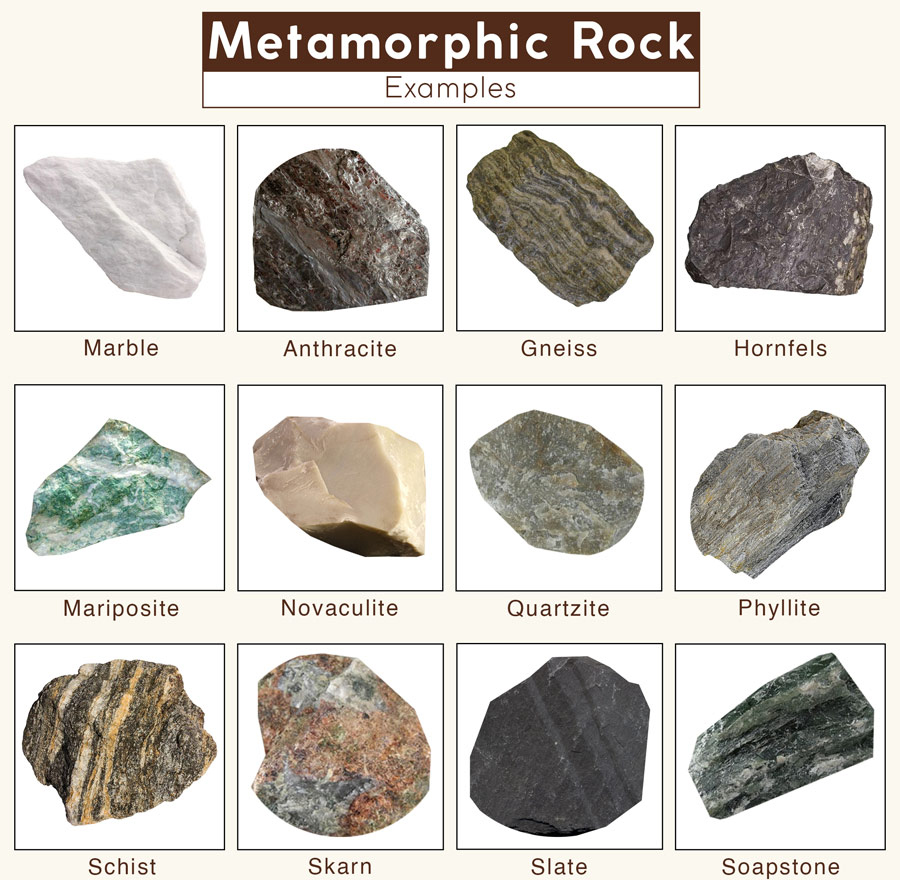Geography
Rocks
- 08 Oct 2022
- 8 min read
For Prelims: Igneous Rock, Sedimentary Rocks, Metamorphic Rocks, Rock Cycle
For Mains: Genesis and Transformation of different kinds of rocks
What is Rock?
- The earth’s crust is composed of rocks. A rock is an aggregate of one or more minerals. Rock may be hard or soft and in varied colors.
- For example:
- Granite is hard, soapstone is soft.
- Gabbro is black and quartzite can be milky white.
- For example:
- Rocks do not have a definite composition of mineral constituents. Feldspar and quartz are the most common minerals found in rocks.
- There are many different kinds of rocks which are grouped under three families on the basis of their mode of formation.
- Igneous Rocks: Igneous rock is formed by the solidification of magma and lava. This is also known as the primary rock. Ex. Granite and Basalt etc.
- Sedimentary Rocks: Sedimentary rocks are the result of deposition of fragments of rocks by exogenous processes. This is also known as the secondary rocks. Ex: sandstone, limestone, shale etc.
- Metamorphic Rocks: Metamorphic Rocks formed from already-existing rocks that are undergoing recrystallization. Tertiary rocks are another name for metamorphic rocks. Ex: phyllite, schist, gneiss, quartzite and marble etc.
What are Igneous Rocks?
- Igneous rocks form out of magma and lava from the interior of the earth, they are known as primary rocks.
- The igneous rocks are formed when magma cools and solidifies. When magma in its upward movement cools and turns into solid form it is called igneous rock.
- The process of cooling and solidification can happen in the earth’s crust or on the surface of the earth.
- Igneous rocks are classified based on texture. Texture depends upon size and arrangement of grains or other physical conditions of the materials.
- If molten material is cooled slowly at great depths, mineral grains may be very large.
- Sudden cooling (at the surface) results in small and smooth grains.
- Intermediate conditions of cooling would result in intermediate sizes of grains making up igneous rocks.
- Granite, gabbro, pegmatite, basalt, volcanic breccia and tuff are some of the examples of igneous rocks.
- The process of cooling and solidification can happen in the earth’s crust or on the surface of the earth.
What are Sedimentary Rocks?
- The word ‘sedimentary’ is derived from the Latin word sedimentum, which means settling.
- Rocks of the earth’s surface are exposed to denudational agents and are broken up into various sizes of fragments.
- Such fragments are transported by different exogenous agencies and deposited. These deposits through compaction turn into rocks. This process is called lithification.
- In many sedimentary rocks, the layers of deposits retain their characteristics even after lithification.
- Number of layers of varying thickness in sedimentary rocks like sandstone, shale etc.
- Depending upon the mode of formation, sedimentary rocks are classified into three major groups:
- Mechanically formed: Sandstone, conglomerate, limestone, shale, loess etc.
- Organically formed: Geyserite, chalk, limestone, coal etc.
- Chemically formed: Chert, limestone, halite, potash etc.
What are Metamorphic Rocks?
- The word metamorphic means ‘change of form’. These rocks form under the action of pressure, volume and temperature (PVT) changes.
- Metamorphism is a process by which already consolidated rocks undergo recrystallisation and reorganization of materials within original rocks.
- Metamorphism occurs when rocks are forced down to lower levels by tectonic processes or when molten magma rising through the crust comes in contact with the crustal rocks or the underlying rocks are subjected to great amounts of pressure by overlying rocks.
- Mechanical disruption and reorganization of the original minerals within rocks due to breaking and crushing without any appreciable chemical changes is called dynamic metamorphism. The materials of rocks chemically alter and recrystallise due to thermal metamorphism.
- There are two types of thermal metamorphism:
- Contact meta-morphism:
- In contact metamorphism the rocks come in contact with hot intruding magma and lava and the rock materials recrystallise under high temperatures.
- Quite often new materials formed out of magma or lava are added to the rocks.
- Regional metamorphism:
- Rocks undergo recrystallisation due to deformation caused by tectonic shearing together with high temperature or pressure or both.
- In the process of metamorphism in some rocks grains or minerals get arranged in layers or lines.
- Such an arrangement of minerals or grains in metamorphic rocks is called foliation or lineation.
- Sometimes minerals or materials of different groups are arranged into alternating thin to thick layers appearing in light and dark shades. Such a structure in metamorphic rocks is called banding and rocks displaying banding are called banded rocks.
- Contact meta-morphism:
- Types of metamorphic rocks depend upon original rocks that were subjected to metamorphism.
- Metamorphic rocks are also classified into two major groups such as foliated rocks and nonfoliated rocks. Gneissoid, Syenite, Slate, Schist, Marble, quartzite etc. are some examples of metamorphic rocks.
What is Rock Cycle?
- Rocks do not remain in their original form for long but may undergo transformation.
- Rock cycle is a continuous process through which old rocks are transformed into new ones.
- Igneous rocks are primary rocks and other rocks (sedimentary and metamorphic) form from these primary rocks.
- Igneous rocks can be changed into metamorphic rocks.
- The fragments derived out of igneous and metamorphic rocks form into sedimentary rocks.
- Sedimentary rocks themselves can turn into fragments and the fragments can be a source for formation of sedimentary rocks.
- The crustal rocks once formed may be carried down into the mantle through subduction process and the same melt down due to increase in temperature in the interior and turn into molten magma, the original source for igneous rocks.
UPSC Civil Services Examination, Previous Year Questions (PYQs)
Q. Describe the characteristics and types of primary rocks.










